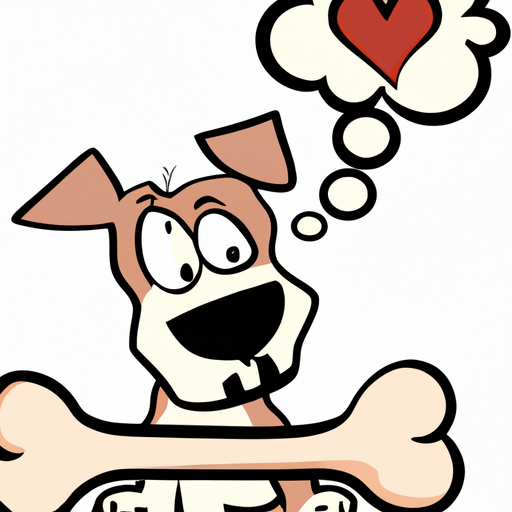A deep-rooted instinct
You might be surprised to know that your dog’s love for bones goes beyond mere taste. It’s deeply rooted in their ancestral behavior. Dogs, being descendants of wolves, are instinctively drawn to bones, as these were a vital part of their ancestor’s diet. They provided essential nutrients, kept their teeth clean, and served as a source of mental stimulation. So, the next time you see your dog enthusiastically gnawing on a bone, remember, they’re not just enjoying a tasty treat, they’re also connecting with their biological heritage.
The Nutritional Value
Bones are not just a source of entertainment for your furry friend, they are also packed with essential nutrients. They provide:
- Calcium and Phosphorus – Vital for healthy bones and teeth.
- Glucosamine – Helps maintain joint health.
- Marrow – A great source of fat and nutrients.
It’s good to note that not all bones are created equal. Cooked bones can splinter and cause harm while raw bones are generally safer.
Mental Stimulation and Dental Health
Bones are like puzzles for dogs. They provide a challenge and keep their minds sharp. Gnawing on a bone is a way for dogs to relieve boredom and provide a sense of purpose.
Moreover, chewing on bones helps keep dogs’ teeth clean. It acts as a natural toothbrush, scraping off plaque and tartar, and promoting overall dental health.
The Dangers of Bones
Despite the benefits, bones can pose a risk to dogs. Some of the potential dangers include:
- Bone fragments can lead to choking or injury.
- Cooked bones can splinter and cause digestive issues.
- Some bones may be too hard and can break a dog’s teeth.
To minimize the risks, always supervise your dog while they’re enjoying their bone.
Choosing the Right Bone
When it comes to choosing the right bone for your dog, size matters. A bone that’s too small might be swallowed whole, while an oversized bone can be hard for your dog to handle. Here’s a simple guide:
| Size of Dog | Size of Bone |
|---|---|
| Small | 2-4 inches |
| Medium | 4-6 inches |
| Large | 6-8 inches |
Also, consider the type of bone. Rawhide bones, for example, are popular but can pose a choking risk. Natural bones are a better option.
FAQs
Q: Can I give my dog cooked bones?
A: It’s generally not recommended. Cooked bones can splinter and cause harm.
Q: How often should I give my dog a bone?
A: It depends on your dog’s dietary needs. Always consult with your vet.
Q: Are there alternatives to bones?
A: Yes, there are plenty of safe chew toys available that provide the same benefits as bones.
Remember, as a caregiver, your dog’s safety and health should always be a priority. So, be mindful when introducing bones into their diet.



